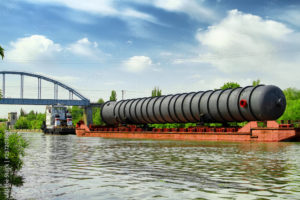Potassium cyanide (KCN) might sound like something straight out of a crime novel, but this deadly compound holds a dark history and an array of uses that extend far beyond fiction. From being a notorious ingredient in suicide capsules to its role in industrial applications, the secrets of KCN are both fascinating and terrifying.
In this article, we will take a closer look at potassium cyanide, uncovering its uses and exploring the dangers it poses to human health and the environment. By shedding light on this hazardous substance, we hope to raise awareness about its potential risks and the importance of handling it with extreme caution.
Whether you are a chemist, enthusiast, or someone simply curious about the dark side of chemicals, this deep dive into the world of potassium cyanide will provide you with valuable insights you never knew you needed. Expect intriguing historical anecdotes, surprising facts, and a frank discussion on the dangers associated with this lethal compound.
Prepare to have your curiosity piqued and your knowledge expanded as we unlock the deadly secrets of potassium cyanide (KCN).
Historical uses of potassium cyanide
Potassium cyanide has a long and sinister history, dating back to ancient times. The compound was first discovered by the ancient Egyptians, who used it for its toxic properties. In fact, it is believed that Cleopatra herself used potassium cyanide as a means of taking her own life.
During World War II, potassium cyanide gained notoriety as a tool of suicide among prisoners of war. Its small size and high potency made it a preferred method for those seeking to escape the horrors of war. This dark chapter in history serves as a reminder of the deadly potential of this compound.
In more recent times, potassium cyanide has found its way into the world of crime and espionage. Its fast-acting nature and difficulty to detect make it an attractive option for those with nefarious intentions. However, its use in criminal activities is highly illegal and punishable by law.
Industrial applications of potassium cyanide
While potassium cyanide has a dark past, it also has a range of legitimate industrial applications. One of the most significant uses of KCN is in the mining industry, specifically in gold extraction. Potassium cyanide is used to dissolve gold from ore, allowing for the separation of gold particles from other minerals.
In the chemical industry, potassium cyanide is utilized in various processes, including the production of organic compounds and dyes. It serves as a catalyst in many reactions, helping to speed up chemical processes and increase efficiency.
The pharmaceutical industry also relies on potassium cyanide for certain applications. It is used in the synthesis of pharmaceutical drugs, particularly those that require the formation of complex molecular structures. However, the use of KCN in this context is strictly regulated and closely monitored.
Potassium cyanide in the mining industry
As fascinating as the uses of potassium cyanide may be, it is important to acknowledge the inherent dangers associated with this compound. KCN is highly toxic and can be lethal even in small doses. It acts by interfering with the body’s ability to utilize oxygen, leading to rapid cell death and organ failure.
Exposure to potassium cyanide can occur through inhalation, ingestion, or skin contact. Symptoms of poisoning include headaches, confusion, dizziness, nausea, and difficulty breathing. In severe cases, it can lead to seizures, loss of consciousness, and eventually death.
Due to its toxicity, strict safety precautions must be followed when handling potassium cyanide. Protective clothing, including gloves and goggles, should be worn, and adequate ventilation should be ensured in areas where the compound is used. Proper storage and disposal procedures are also crucial to prevent accidental exposure.
Potassium cyanide in the chemical industry
When working with potassium cyanide, it is essential to prioritize safety above all else. Here are some key safety precautions to keep in mind:
1. Always wear appropriate personal protective equipment (PPE), including gloves, goggles, and a lab coat.
2. Work in a well-ventilated area or use a fume hood to minimize the risk of inhaling toxic fumes.
3. Never work alone when handling potassium cyanide. Have a colleague nearby who can provide assistance in case of an emergency.
4. Store potassium cyanide in a secure, designated area away from incompatible substances. Ensure proper labeling and keep it out of reach of unauthorized individuals.
5. Follow proper disposal procedures for potassium cyanide waste. Consult local regulations and guidelines for safe disposal methods.
By following these safety precautions, the risks associated with potassium cyanide can be minimized, and potential accidents can be avoided.
Potassium cyanide in the pharmaceutical industry
Due to its deadly nature, potassium cyanide is tightly regulated in most countries. It is classified as a highly hazardous substance and is subject to strict controls and restrictions. The sale, purchase, and possession of KCN are typically limited to licensed individuals and organizations.
In addition to legal regulations, there are international agreements in place to control the production, trade, and use of potassium cyanide. These agreements aim to prevent its misuse and ensure responsible handling and disposal practices.
Dangers and toxicity of potassium cyanide
Potassium cyanide is a compound with a dark history and a range of uses, both legitimate and illicit. While it has proven valuable in certain industrial applications, its extreme toxicity cannot be ignored. It is essential for individuals and organizations working with potassium cyanide to prioritize safety and follow strict guidelines to prevent accidents and protect human health and the environment.
By raising awareness about the dangers and proper handling procedures associated with potassium cyanide, we can ensure that this deadly compound is used responsibly and its risks are minimized. Let us remember that knowledge and caution are key when dealing with substances as lethal as potassium cyanide.
So, whether you are a chemist, enthusiast, or simply curious about the dark side of chemicals, this deep dive into the world of potassium cyanide has provided you with valuable insights you never knew you needed. From its historical uses to its industrial applications, and the dangers it poses, the deadly secrets of potassium cyanide have been unlocked. Handle with care, and stay safe.
Safety precautions when handling potassium cyanide
Potassium cyanide is a highly toxic chemical, and handling it requires strict safety precautions:
- Personal Protective Equipment (PPE): Always wear appropriate PPE. This includes gloves (nitrile or neoprene), a lab coat, and safety goggles. Depending on the risk assessment, a face shield or a full-face respirator may be necessary.
- Engineering Controls: Work in a well-ventilated area, preferably in a fume hood. The area should have safety showers and eyewash stations nearby.
- Handling and Storage: Handle potassium cyanide in a dry, well-ventilated area to prevent inhalation of dust. Store it in a cool, dry place away from acids, as it can release hydrogen cyanide gas when in contact with acids or acidic solutions.
- Disposal: Dispose of potassium cyanide and its containers in accordance with local, state, and federal regulations. Never pour it down the drain.
- Spill and Leak Procedures: In case of a spill, evacuate the area and allow only trained personnel to clean it up. Use appropriate spill kits that can neutralize cyanides.
- Emergency Procedures: Know the symptoms of cyanide poisoning (dizziness, headache, nausea, etc.) and have an emergency action plan in place. Immediate medical attention is critical in case of exposure.
- Training: Anyone handling potassium cyanide should receive specific training in its safe handling, storage, use, and disposal.
- Labeling and Documentation: Clearly label all containers with the contents and hazards. Keep a Material Safety Data Sheet (MSDS) readily accessible.
- Avoid Eating or Drinking in Lab: Never eat, drink, or smoke in the laboratory or near cyanide-containing materials.
- Regular Safety Audits: Conduct regular safety inspections and audits to ensure compliance with safety protocols.
It’s crucial to strictly adhere to these safety measures when working with potassium cyanide due to its high toxicity.
Legal regulations and restrictions on potassium cyanide
The Lethal Nature of Potassium Cyanide
Potassium cyanide is a highly toxic compound that poses a significant risk to human health and the environment. It is a crystalline solid that appears as a colorless, odorless powder. The lethal nature of KCN lies in its ability to disrupt the body’s oxygen-carrying capacity.
When ingested, inhaled, or absorbed through the skin, potassium cyanide rapidly reacts with enzymes in the body, inhibiting their function. This interference prevents cells from utilizing oxygen, leading to severe tissue damage and eventual death. The effects of KCN poisoning can be swift and devastating, making it a highly dangerous substance.
The Historical Uses of Potassium Cyanide
Potassium cyanide has a dark and infamous history, particularly in the realm of suicide. Its availability and lethality have made it a popular choice among individuals seeking a quick and painless way to end their lives. Notorious cases throughout history, such as the Jonestown Massacre, have shed light on the devastating consequences of KCN.
Beyond its association with suicide, potassium cyanide has also been used in criminal activities. The compound’s ability to induce rapid and lethal poisoning has made it an attractive choice for murderers looking to eliminate their victims discreetly. Understanding the dangers of potassium cyanide is crucial in preventing its misuse and protecting public safety.
Environmental Impact of Potassium Cyanide
The dangers of potassium cyanide extend beyond human health. The compound can have severe environmental consequences if mishandled or released into ecosystems. When KCN enters water bodies, it can quickly dissolve, releasing toxic cyanide ions. These ions can be highly harmful to aquatic life, leading to mass fish kills and other ecological disruptions.
In addition to direct contamination, the production and disposal of potassium cyanide can also impact the environment. The manufacturing process often involves the use of other hazardous chemicals, creating a risk of accidental releases or pollution. Proper waste management and adherence to regulatory guidelines are essential in minimizing the environmental impact of potassium cyanide.
Conclusion: Responsible use and handling of potassium cyanide
In conclusion, the responsible use and handling of potassium cyanide is of utmost importance due to its highly toxic nature. This responsibility encompasses several key aspects:
- Strict Adherence to Safety Protocols: Always follow established safety guidelines and protocols. This includes proper use of personal protective equipment (PPE), working in well-ventilated areas or fume hoods, and being trained in emergency response procedures.
- Proper Training and Education: Individuals who handle potassium cyanide must be adequately trained and educated about its risks and safe handling practices. This training should be regularly updated to ensure ongoing awareness and compliance.
- Correct Storage and Labeling: Store potassium cyanide in appropriate containers with clear and accurate labeling that identifies the contents and associated hazards. Storage areas should be secure and compliant with regulatory requirements.
- Emergency Preparedness: Establish and maintain effective emergency procedures, including immediate access to safety showers and eyewash stations. Ensure that all personnel are familiar with the symptoms of cyanide poisoning and the steps to take in case of exposure.
- Environmental Considerations: Disposal of potassium cyanide must be conducted in a manner that minimizes environmental impact and complies with all local, state, and federal regulations.
- Regular Audits and Inspections: Conduct regular safety audits and inspections to identify and rectify potential hazards, ensuring a safe working environment.
- Community and Environmental Safety: Be aware of and mitigate any potential impacts on the surrounding community and environment. This includes proper waste management and emergency response planning.
- Compliance with Laws and Regulations: Adhere to all relevant laws and regulations regarding the handling, storage, and disposal of potassium cyanide.
- Promotion of a Safety Culture: Foster a culture of safety within the organization, emphasizing the importance of responsible handling and the well-being of all individuals.
By observing these principles, the risks associated with potassium cyanide can be significantly mitigated, ensuring the safety of individuals and the environment. Responsible handling is not just a regulatory requirement but a moral imperative to prevent harm and preserve life.








